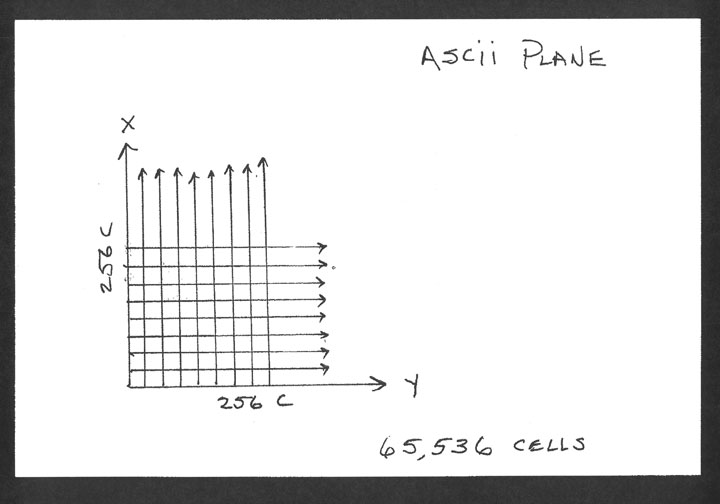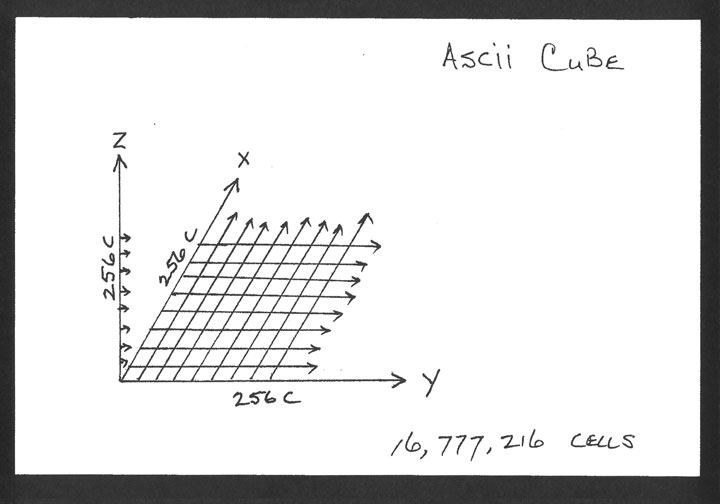Kicking ASCII
Our initial design elements are: the code matrix and bi-furcation theory, the “reverse” engineering principle that “phylogony recapitulates ontology,” and “inversion,” a fundamental tactic of both integrative design and mathematics.
 First, the code matrix, and its companion in crime, the alphanumeric. Encipherment; the substitution of numbers for letters, has been practiced since ancient times. Matrix grids are a more recent invention; these are formatted as indices and map coordinates, as well as the less familiar code matrix. Matrix code systems have traditionally been used to conceal messages, but there is no reason why we can’t use these same stuctures to compress traffic and provide the structure for a data base and a referencing system.
First, the code matrix, and its companion in crime, the alphanumeric. Encipherment; the substitution of numbers for letters, has been practiced since ancient times. Matrix grids are a more recent invention; these are formatted as indices and map coordinates, as well as the less familiar code matrix. Matrix code systems have traditionally been used to conceal messages, but there is no reason why we can’t use these same stuctures to compress traffic and provide the structure for a data base and a referencing system.
The alphanumeric of cyberspace are the ASCII Characters, 8 bit bytes that can be combined into 2 to the 8th power, or 256 versions, this is the “Metric” of the Global Matrix.

A standard X/Y grid matrix with 256 characters per side makes a 65,536 cell matrix, any cell of which can be designated with two ASCII characters. 65,536 different cells referenced by two characters is good, but it’s the old flat world. We cube the matrix by adding a Z-axis, of 256 characters, which gives us a 17+ million cell cubic matrix, of any cell of which can be refer-enced by a three character group.
ascii line x——————————–> 256 Characters